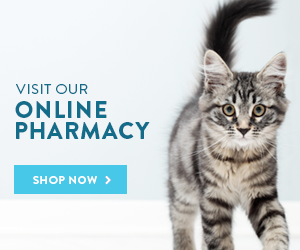

Don't ignore your pet's bad breath! Lack of proper dental hygiene is often the cause of stinky breath, but it may also indicate other, more serious issues with your pet's health. However, we do understand how easy it is to miss as most of the problems that stem from poor hygiene occur where you can't see them - below your pet's gum line.
The first line of defense is always home care. And while some animals, such as dogs, may tolerate their owners handling their mouths and brushing their teeth, most, especially cats, will struggle or act out. This can make oral care difficult at best, and at worst, ineffective.
The best way to ensure your pet's oral health is to have regular cleanings at our office. Our veterinarian will be able to discuss with you how often you ought to come in as well as a home hygiene regimen. This will help to prevent dental issues from progressing to larger (and potentially deadly) internal issues, such as dysfunction or disease in the heart, kidneys, liver, or lungs.
In the wild, hiding pain, illness, or other weaknesses are survival instincts. Many times, your pet will have the same instincts, even in the safety and comfort of your loving home, which is why keeping an eye on your pet's eating habits and behaviors is so important. However, recognizing the difference between normal changes in mood and red flags can be difficult sometimes.
What you interpret as a persistent grumpiness may actually be a sign that your pet is in pain. New irritability, shying away from being touched (especially on the face and around the mouth or throat), sluggishness, loss of appetite or difficulty eating, and lethargy are all behavioral signs which may indicate illness.
However, if you note any of the following physical changes, contact your vet immediately:
Red and swollen gums
Bleeding gums, especially when eating or when having teeth brushed
Swelling around the mouth
Oral abscesses, often appearing as swelling in the face
Abnormal chewing
Loose or missing teeth
Discolored teeth
Crusted build up at the edge of the gums
Persistent bad or fetid breath
Excessive drooling
Weight loss
Preventing oral infections and gum disease will help your pet live a longer, healthier life. And remember, caring for your pet with regular cleanings now will save you money later!

Anesthesia for procedures
We always recommend and utilize the use of anesthesia for all dental procedures.
There are always risks when using an anesthetic, however, these risks are outweighed by the fact that this makes all procedures safer for your pet, safer for the vet, and ensures efficacy. Attempting procedures without anesthesia can present other dangers to the animal or vet. Especially when work needs to be done under the gum line, any movement could mean harm to your pet from our dental equipment.
After all, your pet cannot have a reasoned discussion with our staff the way you can with your dentist. Procedures are likely to make them afraid and they will probably try to get away. Animals who are in pain will often act defensively and are more likely to bite. Even when they're healthy, most animals cannot hold still long enough for procedures like X-rays to be completed correctly.
Advances in the latest anesthetics mean that for most normal procedures, your pet can go home on the very same day. They may be groggy, but their behavior should return to normal the next day.
Procedures we offer
The procedures we use to treat your pet's mouth are very close to the procedures a dentist uses for you.
Your pet's health is as important to us as it is to you which is why we provide a full offering of dental procedures including:
Hygiene:
Scaling (removal of plaque and tartar above the gum line)
Polishing
Filing
Cleaning plaque and tartar below the gum line
Examining below the gum line for signs of disease (X-ray)
Oral Procedures:
Endodontic therapy (Root canals)
Tooth restoration
Orthodontics
Periodontal disease treatments
Infection treatment
Surgical procedures:
Fracture repairs
Extraction of teeth or dental pulp
Oral cancer or cysts treatment
Cleft palate treatment
Tooth abscess treatment






